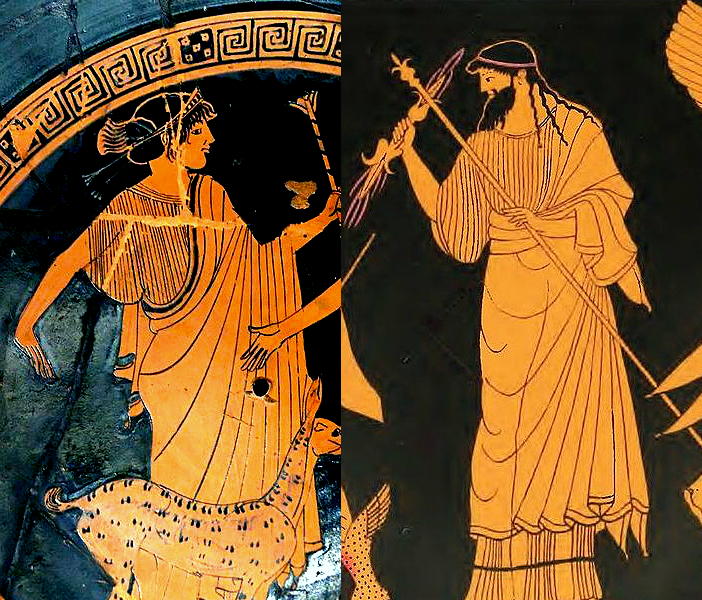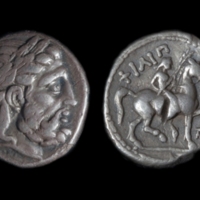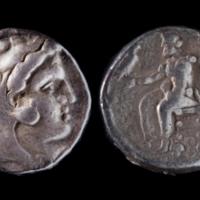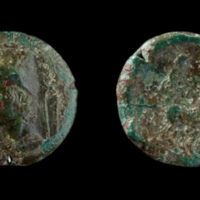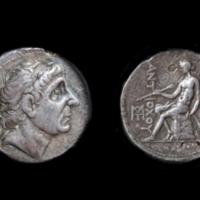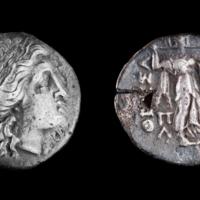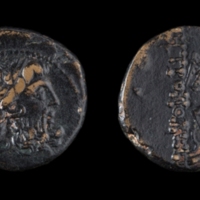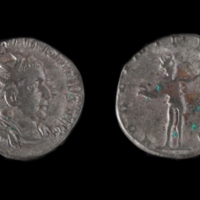Zeus and Apollo
Zeus (in Latin, Jupiter) and Apollo are some of the most important deities in the Hellenistic pantheon. Zeus is usually identifiable as a bearded man holding a scepter. Eagles or lightning bolts often surround him, also acting as identifiable features.
Apollo rivals Athena in "multifaceted-ness," as he is the god traditionally associated with the sun, plagues (which he dispensed with a poison arrow, thus he is often depicted with a bow and arrow), oracles, transitional periods for young men, music and poetry.
In our coinage, we find Zeus or Jupiter portrayed as bearded man crowned with laurel leaves. He is also depicted with the goddess Victoria, or Nike in Greek. Usually seated, he holds Victoria in his hand as a symbol of his dominion over the world. This image is also a reference to a very famous cult statue of Zeus located in Olympia. The statue featured a seated Zeus holding Nike in his hand and stood around forty feet high. It was considered one of the Seven Wonders of the World.
Apollo is shown in typical stances, sitting or standing, similar to those of Zeus. You can differentiate the two by their attributes (i.e. Zeus has an eagle and Apollo has an arrow), and their appearance. Apollo is usually clean-shaven, the standard of beauty for young men.
References:
Gods and Heros in Art, ed. Stefano Zuffi, trans. Thomas Michael Hartmann, The J. Paul Getty Museum, Los Angeles, 2002.
